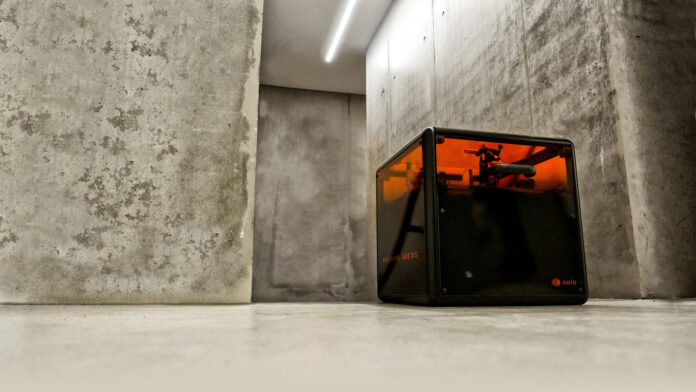3D printing company xolo, known as one of the few companies that commercializes a volumetric 3D printing process called xolography, has secured 8 million euros in a series A financing round. The financing round has been led by the DeepTech & Climate Fonds (DTCF), HZG Group, Onsight Ventures and the current investor SquareOne.
In terms of investments in the AM industry, xolo becomes the third AM company in which VC Firm HZG group invests, after trinckle and Axtra3D.
Read more here: Go Big or Go Home: What does raising money from VC firms mean for Additive Manufacturing Companies?
As a reminder, xolography is a volumetric printing process that produces very smooth surfaces using materials that could not previously be used for 3D printing – opening this way, new fields of application for 3D printing. For example, in medical technology for the reproduction of organs or in the optical industry for the production of high-precision lenses.
xolo co-founder and CEO Dirk Radzinski: “Xolography represents a fundamental shift in the 3D printing industry. From hardware to materials, everything is being rethought. Our investors understand the importance of this paradigm shift and support us with their financial strength, expertise and network towards making it a success.”
The printing process was developed at the Technology Park Berlin Adlershof by xolo founders Prof. Dr. Martin Regehly, Prof. Dr. Stefan Hecht and Dirk Radzinski. Xolography sounds like science fiction, because objects are seemingly created out of thin air. Unlike conventional 3D printing processes, the 3D printer Xube is based on a cuvette with liquid resin continuously moving through a light sheet, into which an additional light projection is focused. By enriching the liquid resin with photoactive specialty chemicals developed by xolo, the so-called photoinitiators, the final product is produced within a very short time and with smooth surfaces.
Frank Carsten Herzog, managing partner of the HZG Group, adds: “Xolography significantly improves the resolution and volume generation rate of previous processes. This means that in the future, the process will be able to produce large numbers of highly detailed objects in a short time – the economic potential is enormous.“
Remember, you can post jobopportunities in the AM Industry on 3D ADEPT Media free of charge or look for a job via our job board. Make sure to follow us on our social networks and subscribe to our weekly newsletter : Facebook, Twitter, LinkedIn & Instagram ! If you want to be featured in the next issue of our digital magazine or if you hear a story that needs to be heard, make sure to send it to contact@3dadept.com






